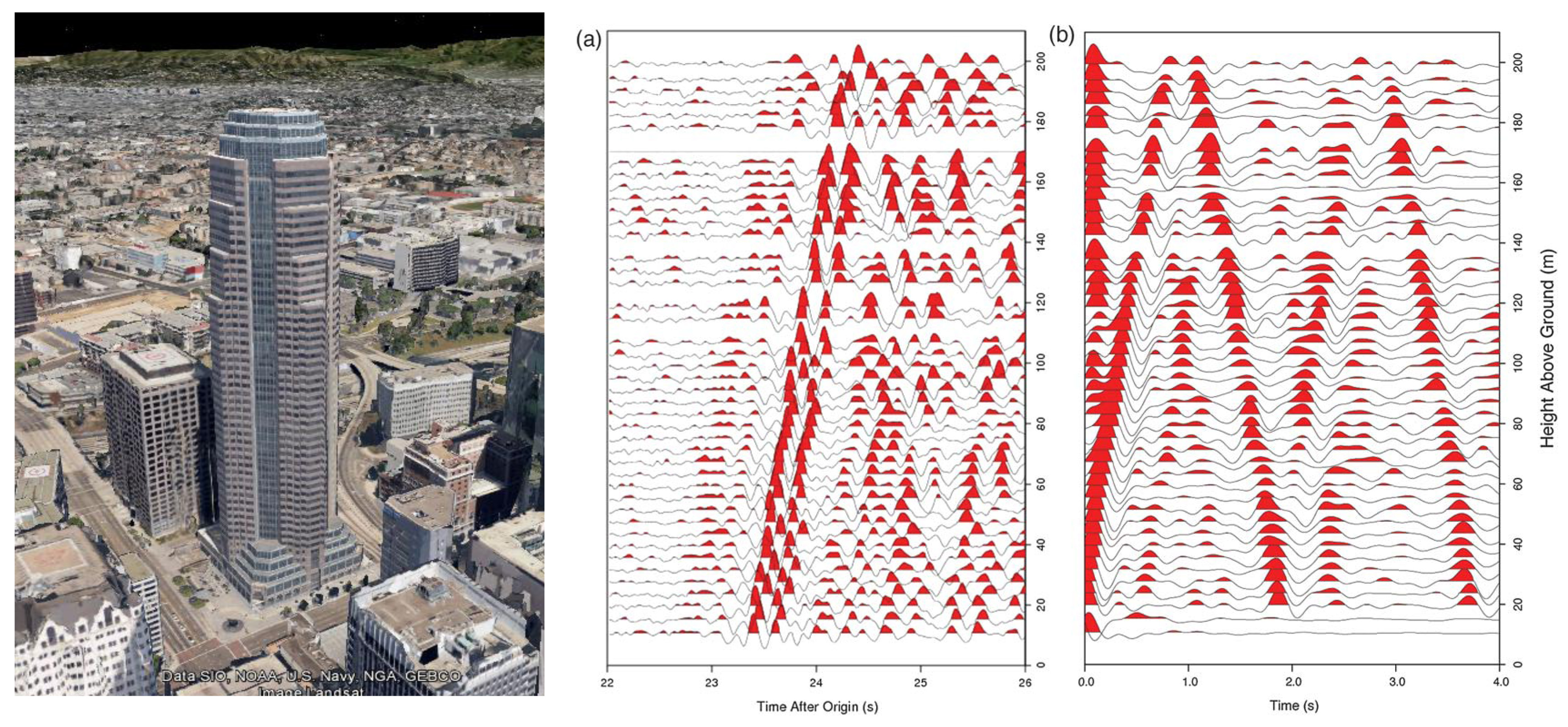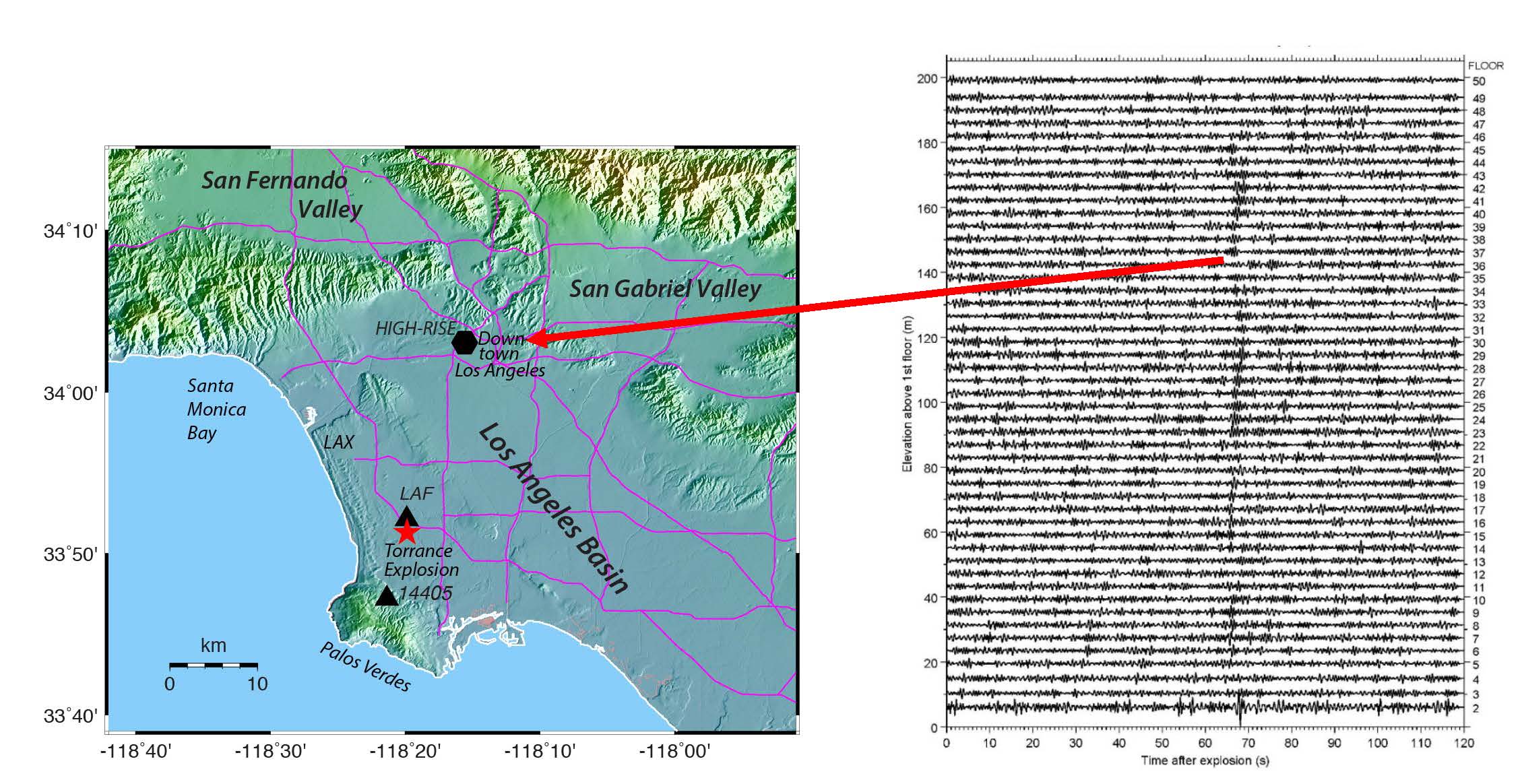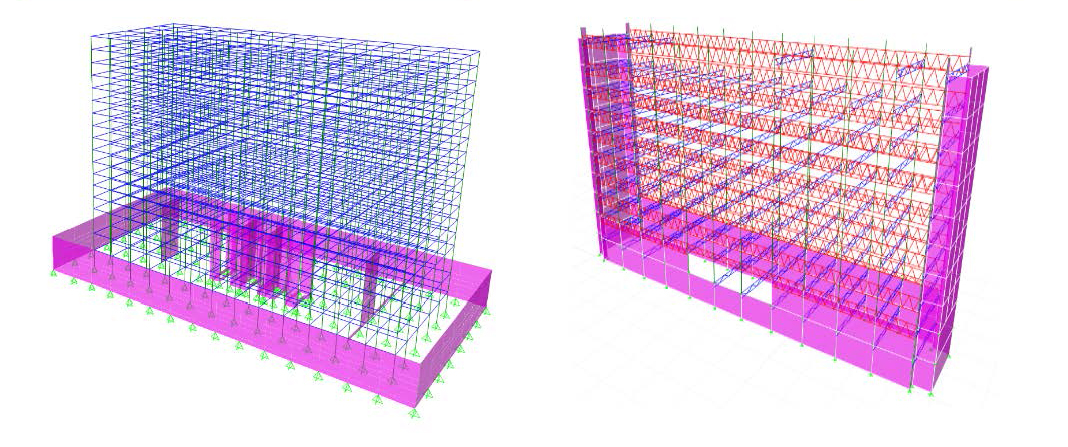Buildings
CSN includes a structural monitoring component that is unique in several aspects: Vibration data are recorded on a small spatial scale—floor-by-floor—and continuously 24/7/365 at 50 sps for the purpose of developing new ways to conduct damage detection and system identification after strong shaking. Several mid-rise and high-rise structures in greater Los Angeles have been instrumented with up to three triaxial CSN sensors per floor. This work is driven by the recognition that continued commercial development of high-sensitivity, low-cost sensors is making it possible to image full, time-varying seismic wavefields in buildings within a large frequency band. Numerical and observational analysis has been carried out with earthquake, explosion, and ambient vibration waveform data recorded by the CSN sensor deployments in the existing buildings.

Example testbed—52-story dual system braced-moment frame building 1 triaxial sensor per floor: The center panel shows the accelerations from the 1/4/2015 M4.3 Castaic Lake, CA, earthquake recorded on building's low-cost CSN accelerometers in the building-EW horizontal direction. The right panel shows the results of ambient noise correlation where the lowest level accelerometer of cross-corrwlated with all the other floors (for 9 days). The wave travels up and down in the building with a velocity of about 200 m/s. The arrival that is close to the left axis is the wave traveling in the steel frame at approximately 5000 m/s. The CSN data has motivated the application of wave propagation and tomographic methods developed for seismological applications to the instrumented buildings for detection and location of shaking-induced damage events such as steel beam connection fractures and brace-element connection failures. Application of time-domain interferometric techniques is applied for system identification of buildings using earthquake and ambient vibration recordings. With access to the structural drawings of the instrumented buildings, we have constructed 3D finite-element models of those buildings, validated in the linear regime by earthquake data recorded in the actual building being modeled. The models are then used to make predictions for building dynamic response to varying damage scenarios that include nonlinear material properties in the models.

First few NS translational modes of 52-story building, illustrated by CSN data for La Habra earthquake, and the Finite-Element model.
With the continuous data recording, other vibration events are also recorded, including high wind events and pressure waves such as those caused by explosions.

ExxonMobil Refinery Explosion in Torrance, CA; Air pressure wave recorded at 52-story building in downtown LA
Additional CSN structural health monitoring testbeds with dense instrumentation:
| Building Type | # of Stories | Year constructed | Use |
|---|---|---|---|
| Dual system (moment and brace frame) | 52 | 1988 | Office Building |
| Steel moment frame | 15 | 1978 | Office/Lab |
| Steel moment frame. Concrete shear walls in core area to 2nd floor. | 15 | 1961 | Office Building |
| Reinforced concrete moment frame/brace frame upgrade | 14 | 1970/2005 | Dormitory |
| Reinforced concrete/seismic retrofit | 11 | 1966/2008 | Office Building |
| Steel moment frame with trusses and girders | 9 | 1961 | Office Building |
| Reinforced concrete with shear walls and moment frames | 5 | 2005 | Office/Lab |
| Steel moment-brace frame | 4 | 1988 | Office/lab |

